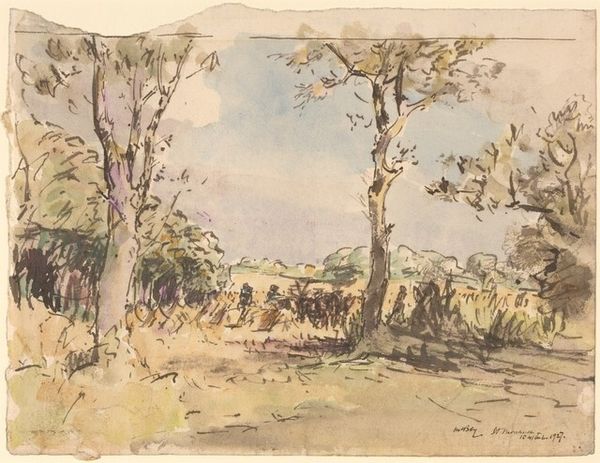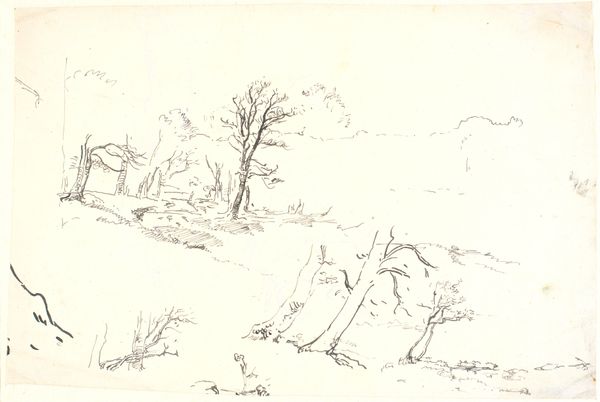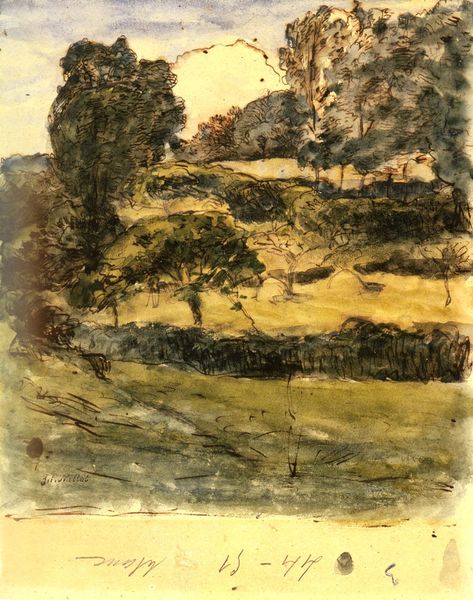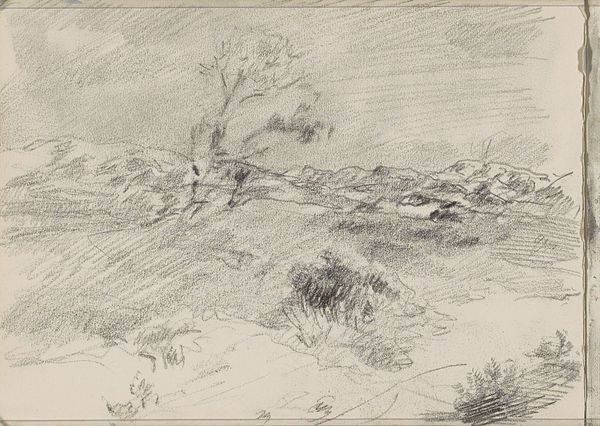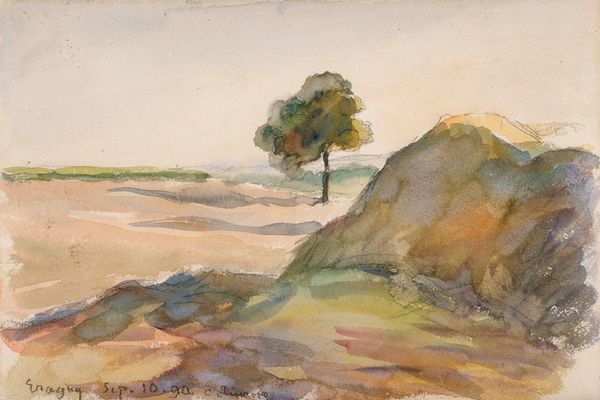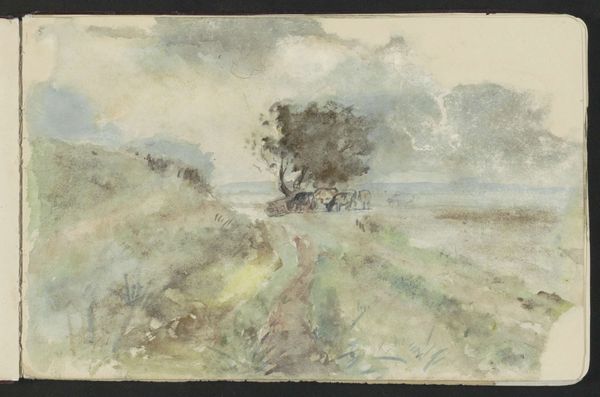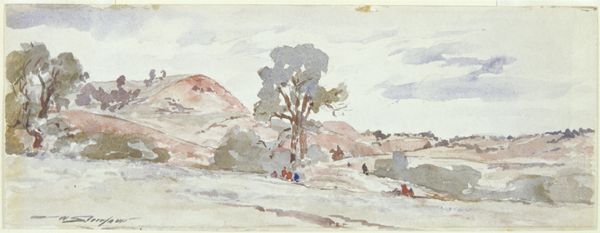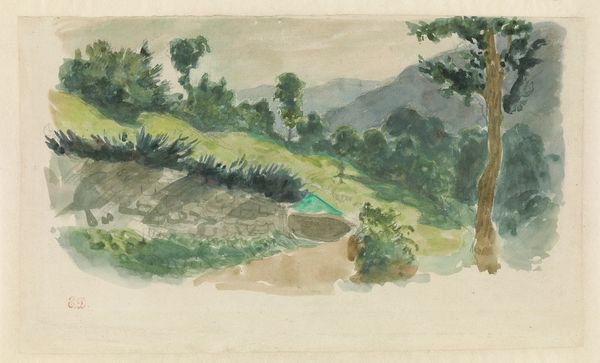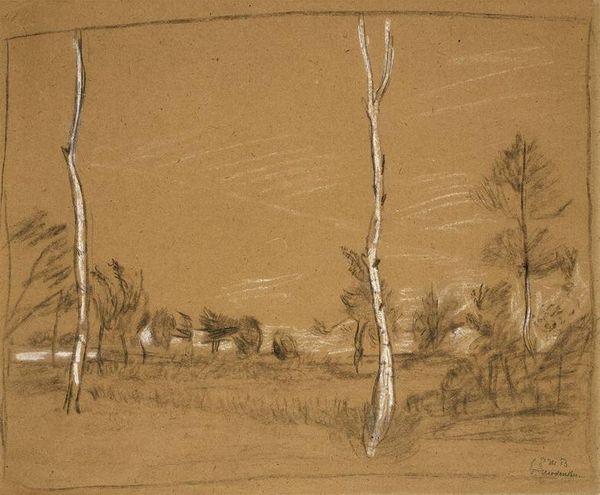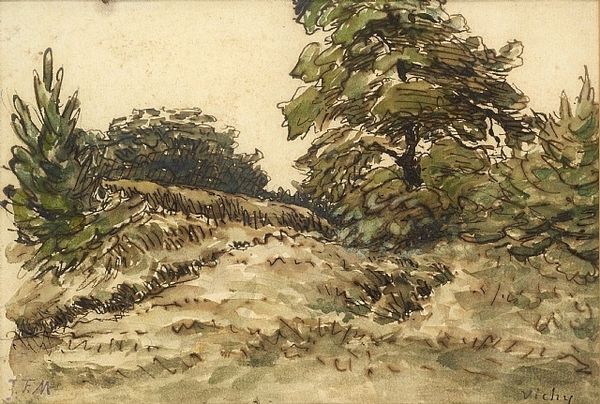
Copyright: Public Domain: Artvee
Editor: We’re looking at "Neutakonkanut," a watercolor landscape created in 1891 by Edward Mitchell Bannister. I'm struck by the fluidity of the colors; they blend into each other, creating soft edges and shapes. What stands out to you, when you observe its composition? Curator: Immediately, I observe the artist’s skillful manipulation of the watercolor medium to evoke depth and atmosphere. Consider the subtle gradations of tone across the plane – the progression from lighter to darker hues effectively models the undulating terrain, creating a spatial recession. Note the balance, too. How might we analyze the placement of the dominant tree and the rocks in relation to one another? Editor: Well, the tree, placed off-center, kind of anchors the left side. And the scattered rocks balance the right. It’s interesting that the land seems to curve in both directions. It gives it a sense of gentle movement. Curator: Precisely. The gentle, curving strokes invite the viewer's gaze to travel across the surface. Semiotically, one might decode the palette. The limited use of pigments contributes to a sense of understated realism, creating harmony across the scenery. Are there compositional elements that disrupt this harmony? Editor: Perhaps the stark dark curve of the main tree. The branch pointing towards the painting's signature feels out of place, disrupting the visual harmony established by the rolling hill. It gives the scenery an overall unbalanced look, creating a sharp contrast that highlights the organic softness. Curator: An astute observation. That element could function as an important contrast against the rest. By juxtaposing organic forms, Bannister created a pictorial dynamism. How fascinating! Editor: Yes! I noticed the dynamism. I never thought of it that way! Thanks for your insight!
Comments
No comments
Be the first to comment and join the conversation on the ultimate creative platform.


